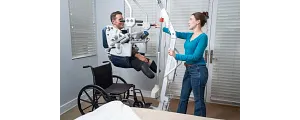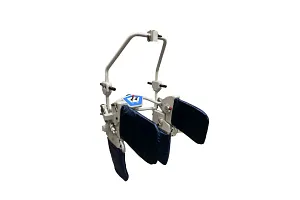Change Language :
The first ever seated self-transfer system between bed & wheelchair
For people with limited mobility, getting out of bed and into a wheelchair on their own can be difficult, if not impossible. Just in the U.S., roughly 24.2 million people are unable to independently get out of a bed or chair. Even with nursing assistance and standard mechanisms like body boards or slings, this transfer is still difficult and can cause injury to both nurse and patient.
These challenges inspired the team at UpLyft® — in conjunction with Pathway NPI — to develop the first ever seated self-transfer system between bed and wheelchair.
Overcoming design challenges
The primary challenge that the UpLyft & Pathway NPI teams faced was the size of the UpLyft — it needed to be able to work within small spaces like a patient’s bedroom and various clinical environments. According to Cochran, “In order to be compatible with existing hoists and wheelchairs, and still be safe and comfortable for the patient, the UpLyft needed to be as small as possible.”
Another consideration when designing the UpLyft was its load capacity. It needed to be able to handle loads as high as 300 pounds on a frequent basis.
Various bearings made of the iglide G material were used throughout the entire machine. “Those bearings were used at several different points: Cable pulleys, toggle arms, frame hinge points, safety switch,” explained Cochran.
Every bearing used served the similar purpose of remaining compact while still capable of handling high loads and cycles, while also not generating excessive amounts of dust or particulates. The bearings also remain quiet during operation, ideal for sensitive healthcare spaces.


